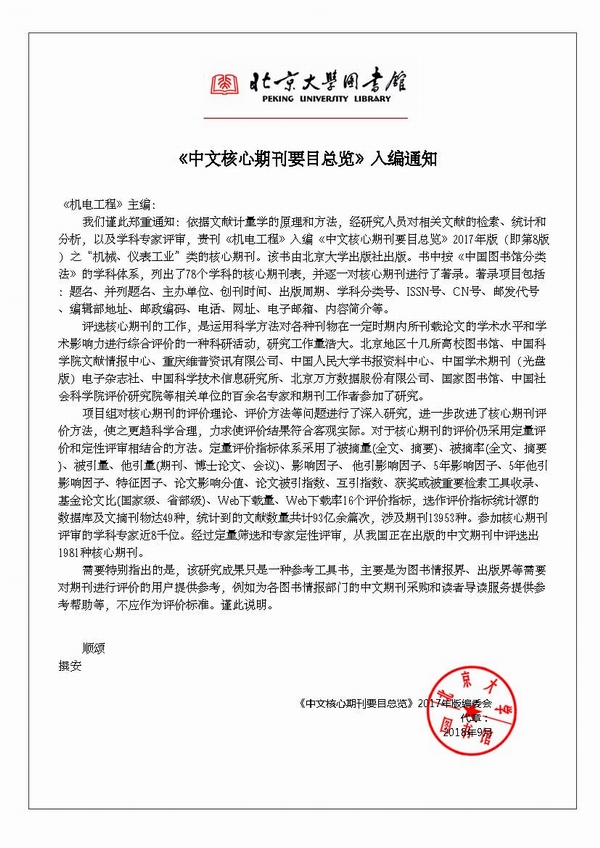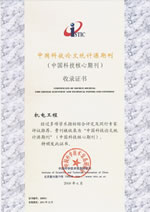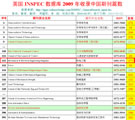
Founded in 1971 >
Chinese Sci-tech Core Periodicals >
British Science Abstracts (SA, INSPEC) Indexed Journals >
United States, Cambridge Scientific Abstract: Technology (CSA: T) Indexed Journals >
United States, Ulrich's Periodicals Directory(UPD)Indexed Journals >
United States, Cambridge Scientific Abstract: Natural Science (CSA: NS) Indexed Journals >
Poland ,Index of Copernicus(IC) Indexed Journals >
International Standard Serial Number:
ISSN 1001-4551
Sponsor:
Zhejiang University;
Zhejiang Machinery and Electrical Group
Edited by:
Editorial of Journal of Mechanical & Electrical Engineering
Chief Editor:
ZHAO Qun
Vice Chief Editor:
TANG ren-zhong,
LUO Xiang-yang
Tel:
86-571-87041360,87239525
Fax:
86-571-87239571
Add:
No.9 Gaoguannong,Daxue Road,Hangzhou,China
P.C:
310009
E-mail:
meem_contribute@163.com
WANG Jun1, FU Xi bin2, ZHANG Jin mei3, HUANG Xue bin2, ZHONG Shun cong1,4, FAN Xue teng1, LIN Qi ben1
(1.Laboratory of Optics, Terahertz and Non-destructive Testing, School of Mechanical Engineering and Automation, Fuzhou University, Fuzhou 350108, China;2.Xiamen Special Equipment Inspection Institute, Xiamen 361000, China;3.Xiamen Institute of Standardization, Xiamen 361004, China;4.School of Mechatronic Engineering and Automation, Shanghai University, Shanghai 200444, China)
Abstract: In order to solve the problem of the mixture of straight wave and defect signal in near surface dead area of time of flight diffraction image, a signal processing method for near surface defects based on adaptive filtering was presented. A two dimensional finite element model of the near surface defect of TOFD was established by Comsol. According to the propagation process of ultrasonic wave and the A scan signal,the causes of the near surface dead area were analyzed.The RLS adaptive filtering algorithm was applied to process the simulated signals under the upper surface of 3mm and 10mm respectively, which could effectively separate the defect signals in the one dimensional mixed signals, and could get the defect length information with less error compared with the simulation data. The adaptive filtering technology was employed to process the TOFD image, and subsequently the defect signal hidden under the direct wave was extracted. The experimental results demonstrate that the RLS adaptive filter can effectively solve the problem of the near surface dead area and extract the near surface defect signal under the direct wave.
Key words: time of flight diffraction(TOFD); Comsol; adaptive filtering; near surface detection dead zone








